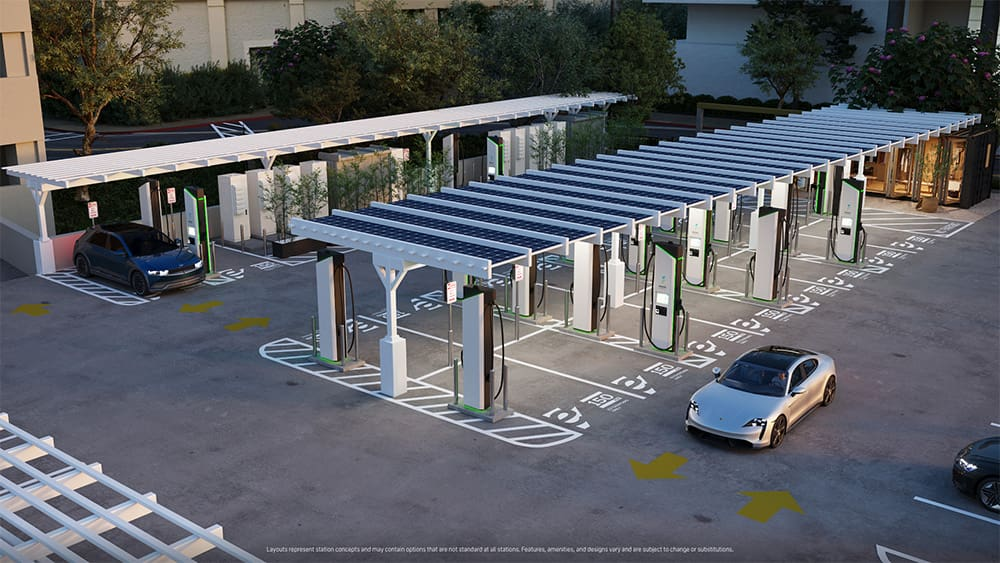The global electric vehicle (EV) market has been experiencing exponential growth over the past few years, and South America is emerging as a key frontier for the region’s EV adoption. Particularly in Brazil and Argentina, EV sales have surged significantly in 2024–2025, yet the corresponding charging infrastructure remains underdeveloped. According to the International Energy Agency (IEA), South America has fewer than 13,000 public charging stations, with each station serving approximately 60–100 vehicles on average—substantially higher than the European and North American averages of 15–20 vehicles per station.
This discrepancy between rapidly growing EV demand and limited charging infrastructure highlights a significant market opportunity for investors, automakers, and policymakers. This article provides a comprehensive analysis of South America’s EV charging landscape, including slow charging, fast charging, residential and fleet charging, investment opportunities, challenges, and future development trends.
Current Landscape of EV Charging Infrastructure in South America

Public Charging Stations
The development of public charging stations across South America is highly uneven:
Brazil: Approximately 12,000 public charging points as of 2025, primarily concentrated in São Paulo, Rio de Janeiro, and key highway corridors.
Argentina: A few thousand public chargers, mainly located in Buenos Aires and select urban centers.
Chile and Colombia: Urban centers have some coverage, while rural and remote areas remain largely unserved.
The number of public charging points is still far below the growth of EV ownership, creating substantial market gaps and investment potential.
Slow Charging and Residential Infrastructure
Slow charging, typically AC charging stations, is the backbone for daily residential and fleet charging. However, adoption in South America faces several challenges:
Limited private charging options for apartment residents.
Insufficient slow-charging infrastructure for corporate fleets.
Sparse distribution of public slow-charging stations, resulting in low utilization efficiency.
Currently, slow chargers account for approximately 60% of all charging points in the region, but their uneven distribution and low efficiency limit their capacity to meet the future EV demand surge.
Fast Charging Infrastructure
Fast chargers (DC chargers) account for less than 20% of the region’s charging network and are mainly concentrated in metropolitan areas and along major highways. With power ratings typically ranging from 50 kW to 150 kW, fast chargers are critical for long-distance travel.
Key challenges include:
High capital expenditure (CAPEX), with each fast charging station costing tens of thousands of dollars.
Grid capacity limitations, as concentrated high-power usage can cause local overloads.
Low utilization rates, leading to extended return on investment (ROI) periods.
Despite these challenges, fast charging remains essential for improving the EV user experience and accelerating market adoption.
Opportunities in South American EV Charging Infrastructure
Market Growth Potential
South America’s EV penetration rate is still relatively low, approximately 2–3% in 2025, compared to the global average.
Brazil: EV sales in 2024–2025 increased by over 150% year-on-year.
Argentina: Policy incentives, including import tax exemptions for low-cost EVs, have driven rapid sales growth.
The surge in EV adoption directly translates to increased demand for charging infrastructure, presenting significant growth opportunities for early market entrants.
Policy Support and Government Incentives
Brazil: Local governments provide financial incentives to encourage private sector participation in charging station deployment.
Argentina: Reduced import duties for low-cost EVs support both vehicle sales and the development of complementary charging infrastructure.
Public-private partnership (PPP) models are encouraged to accelerate infrastructure deployment.
Diversified Business Models
Fast chargers are deployed along highways and in city centers to serve long-distance and urban commuters.
Slow chargers cover residential areas and corporate fleets, addressing everyday charging needs.
Integrating energy storage and smart charging systems can reduce peak grid loads and shorten ROI periods.
Charging stations combined with retail, cafes, and parking facilities create multi-revenue streams.
Renewable Energy Integration
Brazil’s hydropower, Chile’s solar resources, and Argentina’s wind potential offer abundant renewable energy for EV charging.
Green charging networks align with ESG investment trends, making South America attractive to international investors.
Challenges Facing South American EV Charging Infrastructure
Grid Limitations and Uneven Electricity Supply
High-power fast chargers concentrated in urban centers or highway corridors may cause local grid overloads.
Rural and remote areas often face unreliable electricity supply, complicating network expansion.
Investment Return and Financing Constraints
High CAPEX and low initial utilization extend payback periods (>7 years).
Currency fluctuations and high financing costs increase project uncertainty.
Lack of Standardization and Interoperability
Multiple charging protocols and payment systems create barriers for seamless user experience.
Inconsistent standards hinder network optimization and operational efficiency.
Policy and Market Uncertainty
Tax incentives, subsidies, and import quotas may change, impacting investment decisions.
Local industrial protectionism can slow the deployment of foreign-funded charging infrastructure projects.
Future Trends and Development Blueprint
Charging Network Layout
Fast charging networks will increasingly cover key highway corridors, forming a backbone for long-distance EV travel.
Slow charging infrastructure will expand to residential complexes and corporate fleets to meet daily charging demands.
Technology and Operational Trends
Integration of energy storage and smart grid management systems will become essential.
Standardized payment systems and interoperability protocols will accelerate adoption.
Data-driven operation optimization can improve utilization rates and reduce operational costs.
Business and Investment Opportunities
Public-private partnership (PPP) models, combined with multi-revenue strategies (charging + retail + parking), provide attractive investment avenues.
Key investment focus: major metropolitan areas, primary transportation corridors, and regions with abundant renewable energy.
Collaboration between foreign technology providers and local companies will help rapidly capture market share.
Conclusion
South America’s EV charging infrastructure is poised at a pivotal growth stage. While fast charging represents a high-profile opportunity, slow charging, residential, and fleet infrastructure are equally critical for the region’s EV adoption. Collaborating with reliable EV charging equipment suppliers can ensure the deployment of high-quality, efficient, and scalable charging solutions to meet this growing demand.
Investors, automakers, and policymakers should seize this strategic window to establish comprehensive charging networks, integrating energy storage, smart management systems, and renewable energy sources. Partnering with experienced EV charging equipment suppliers will not only address immediate charging needs but also lay the foundation for a sustainable and resilient EV ecosystem across South America.

